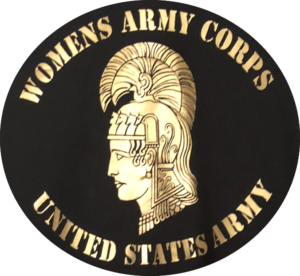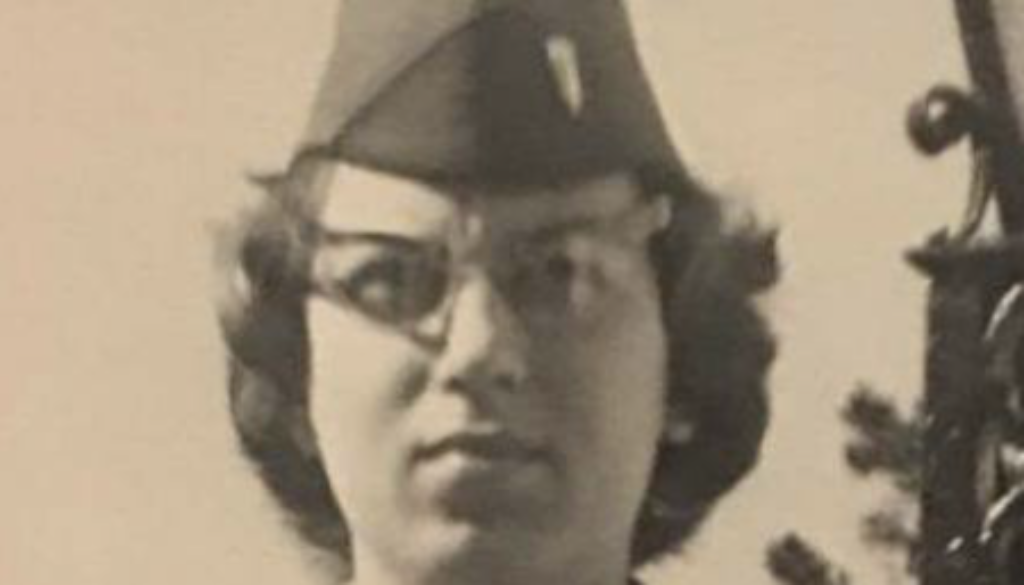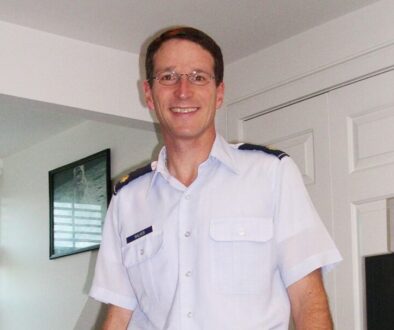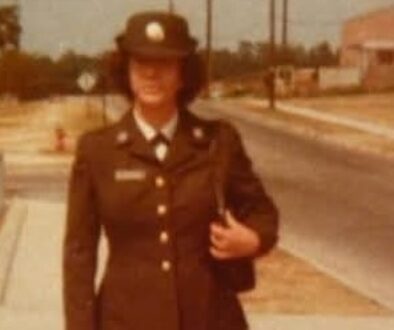Private First Class Sue (Van Meter) Hodge, U.S. Army Cold War Service in the Women’s Army Corps
I met Private First Class (PFC) Sue (Van Meter) Hodge after she read an article about when veterans are permitted to salute the American flag. Sue was ecstatic after learning that because she is a veteran, she can salute the flag she so willingly served as a member of the Women’s Army Corps, or WACs, over fifty years ago. Sue is immensely proud of her service and she should be—her service and the service of others like her in the WACs helped pave the way for the many women who serve with distinction in all branches of the U.S. military today. This is her story.
Sue was born in 1944 in Enid, Oklahoma, a small town about 115 miles west of Tulsa. Her father worked as a security guard in the oil and gas industry until he was diagnosed with Tuberculosis. On doctor’s orders, he moved the family to Colorado to recuperate in the fresher climate. They returned to Olive, Oklahoma, when Sue was ten, and that became Sue’s family home. The town was small, with a store, a church, and eight to nine houses. Sue and her twin sister graduated from Olive High School, a consolidated school supporting all the surrounding towns, in May of 1962. Her graduating class had a grand total of eighteen seniors, and Sue won the American Legion Medal Award for her class.
There was never a question about what Sue would do after she graduated—she wanted to join the military. All five of her older brothers served, with the oldest having fought and been seriously wounded in Europe during World War II. When her brothers came home on leave, they looked very handsome in their uniforms. They also told her about their travel and experiences in the Army and the Air Force, making her want to follow in their footsteps. She was also intensely patriotic and simply wanted to serve.
When Sue was in ninth grade, she told one of her brothers home on leave that she wished women could serve in the military. He said they could and described the WACS, the WAVES (Women Accepted for Volunteer Emergency Service (Navy)), and the WASPs (Women’s Air Force Service Pilots). From that moment on, Sue couldn’t wait to graduate and join the military.
Sue’s brother also told her he would pay her a quarter if she shined his military shoes for him so he would look good in uniform when he went out on the town. Sue said she didn’t know how, so he taught her. He also taught her how to shine his brass belt buckle and buttons, and he paid her for keeping everything clean. This only fueled Sue’s desire to serve.
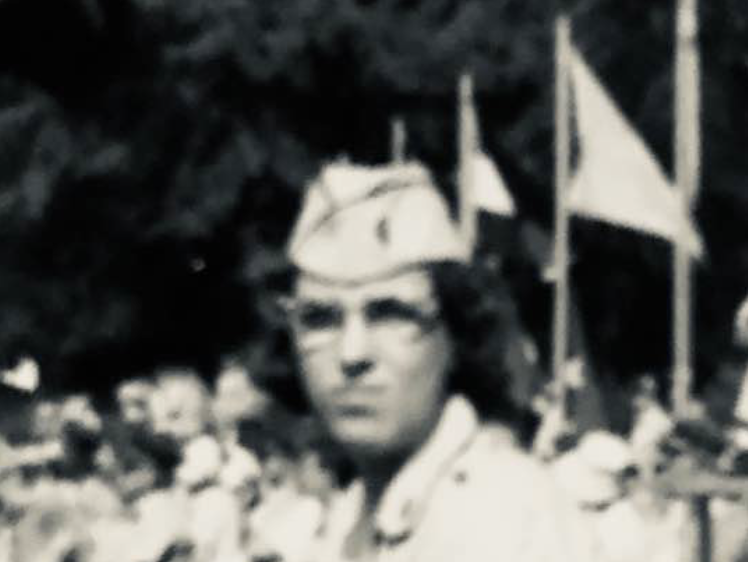
Sue didn’t enlist immediately after graduation because it looked like her twin sister might be getting married by the end of the summer, so she waited. By the end of September, though, she was ready. It turns out enlisting in a small town like Olive wasn’t easy in 1962. In fact, the nearest recruiter was in Tulsa, about forty miles away. The other option was to go to the post office and fill out a card expressing her interest in enlisting, which was the option she chose after she convinced her father joining the military was the right thing for her to do.
On Tuesday, September 25, 1962, Sue’s father drove her to the Drumright, Oklahoma, post office about six miles from where she lived so she could fill out a card. When she informed the clerk about what she wanted, he told her it was her lucky day because there was an Air Force recruiter visiting that day and he’d be back shortly. When he returned, the recruiter said he would pick her up at her house the next day and drive her to Oklahoma City (about ninety miles away) to take her Armed Forces Qualification Test (AFQT) and get her physical. Sue agreed—she was on her way to fulfilling her dream.
When Sue arrived at the Recruiting Office, she filled out the enlistment paperwork, passed her AFQT with flying colors, and took the vision and hearing tests. The recruiter said she scored so high on her AFQT that she could be an electrician. She thought that funny because the only electricity related question on the test asked what AC and DC meant. The results of the vision test were not as funny, though, as her vision in her right eye was impaired and, even though fully correctible, it was disqualifying for the Air Force.
The recruiter didn’t give up on Sue and offered to introduce her to the Navy recruiter. As Sue really didn’t care which service she joined, she agreed to talk with the Navy. She had to fill out the enlistment paperwork and take the same AFQT again, and then took another vision and hearing test. Again she was disqualified because of the vision in her right eye. Like the Air Force before, the Navy recruiter did not give up on Sue and offered to introduce her to the Army. Still determined to get into the military, Sue agreed.
Now with the Army recruiter, Sue again filled out the enlistment paperwork, took the AFQT, and repeated the vision and hearing tests. The Army recruiter commented that she “aced” her AFQT. Sue responded that she ought to have given that she’d taken it three times that day and nearly had it memorized. This time, though, the enlistment results were different because the Army was willing to waive Sue’s poor vision in her right eye since it was fully corrected. The recruiter drove her back to Olive and told her he would pick her up on Monday morning so she could finish her physical, sign her enlistment contract, and be sworn into the military.
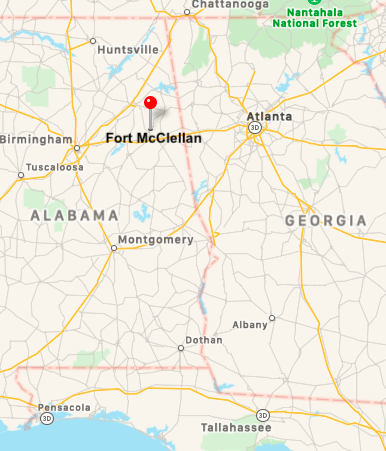
The recruiter rang Sue’s doorbell precisely at 5:30 a.m. on Monday morning, October 1. For a moment, Sue had second thoughts because she hated getting up so early. But she went anyway and before long, she was officially enlisted in the Army and beginning a journey reminiscent of the movie Planes, Trains, and Automobiles. After a series of short flights starting in Oklahoma City and ending in Birmingham, Alabama, she boarded a train to Anniston, Alabama, home of Fort McClellan and the Women’s Army Corps School. Someone in a jeep picked up her and another woman and took them to the base, where they finally arrived around 2:00 a.m., completely exhausted from having both traveled all day.
It turned out that Sue and her newfound friend from Missouri were the first two members of her training platoon to arrive. Platoon Sergeant Torrence came to see them in the morning and said they would hopefully have enough recruits to begin training soon. In the meantime, they were given mops and buckets and assigned cleaning duties every day until the training finally commenced.
Sue was amazed at all of the women in her platoon. Here she was, barely eighteen and from a very small town, and soon she had older, more experienced women arriving from big cities like New York, Chicago, Boston, Miami, and Memphis. Sue and the other women filled out lots of paperwork, were issued their uniforms, and met with Sergeant Torrence for the first time as a unit.
Sue expected Sergeant Torrence to yell at them all the time and order them around, but it turned out to be just the opposite. Instead, Sergeant Torrence told the women that they were all sisters and that she would not tolerate profanity. She treated everyone with respect and referred to them as ladies. Sue really looked up to her.
Soon after everyone arrived, they were formed into twelve-person squads. Sergeant Torrence picked a squad leader for each squad and an overall platoon leader, who was to be the sergeant’s right-hand man. Each week, new people would be rotated into the leadership positions. On the second week, Sergeant Torrence selected Sue to be the overall platoon leader. When it came time to rotate the following week, Sergeant Torrence announced that Sue, the youngest person in the platoon, would remain in her position for the rest of the training. She’d earned the respect of her fellow recruits and it made her feel proud.
About three weeks into October 1962, Sergeant Torrence summoned Sue and told her to assemble the platoon in thirty minutes. The recruits, now a little over two weeks into their training, sat on bleachers until the platoon sergeant arrived. Sergeant Torrence told them that the President had ordered all bases to go to Code Red and that this was not a drill—it was serious. Effective immediately, they were on lockdown. She told them that the United States had discovered missiles in Cuba and that the missiles could hit the base at any minute. Sue remembers thinking she wished she’d stayed home because she was now too close to Cuba. While she was thinking about the bad situation they were all in, Sergeant Torrence called out “Private Van Meter,” which was Sue’s maiden name. Sue said it so startled her that she almost hit the floor. The sergeant continued, “You watch everything I do, because if something happens to me, you’ve got to do it.”
Having been there not much more than two weeks, Sue had no idea how she would train the other women—she didn’t even know what to do herself. But the platoon sergeant’s announcement and delegation of authority illustrates the state of mind at the time as the United States and the Soviet Union postured on the brink of nuclear war. Mail delivery to the platoon stopped and the recruits were told they could not tell their families how serious the situation was. Tensions ran high until October 28, when the President announced Russia would pull its missiles out of Cuba.
The Cuban Missile Crisis ended, but not before it impacted one recruit in Sue’s platoon personally. The recruit was thirty-five years old and originally from Cuba. She joined the Army to become a nurse. In the wake of the crisis in Cuba, she was informed that she could no longer be a nurse. Although she was very upset about the decision, she was determined to stay in the Army and serve out her commitment, which she did.
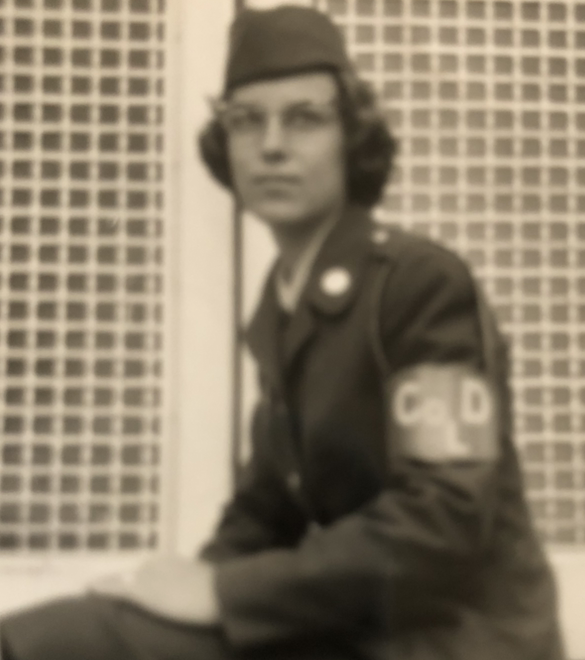
Sue’s platoon graduated on December 7, 1962—Pearl Harbor Day. Immediately after graduation, there was a commemoration for the event, which Sue found very moving. She graduated as a Private (E-2), making $65/month, and had the highest academic scores for her platoon. She was also in good physical shape when she arrived, so the physical training was not a problem for her either. All in all, with one exception, her training experience at Fort McClellan was a positive experience.
Unfortunately, the exception is significant. Not only was Fort McClellan the home of the WACs School, but it was also the home of the Army Chemical Center and School. At the time, Sue didn’t know it was there, but she does now because she was potentially exposed to chemical contamination. Although the Veterans Administration asserts there are no adverse health conditions associated with service at Fort McClellan, many servicemembers and their families disagree. Sue herself has noticed adverse effects that cannot be explained by her family history. Fort McClellan was shut down in 1999 based upon the recommendation of the Base Realignment and Closure Commission. Efforts to create a national registry of military persons potentially exposed to chemical contamination at Fort McClellan have so far proven unsuccessful.
After graduating from WAC School, Sue took ten days leave at home and then had to report to Fort Benning, Georgia, right before Christmas in 1962. After barely making it in before her leave expired due a flight cancellation, Sue had little to do once she arrived because everyone else was on leave for the holidays. Eventually, she was assigned as a typist in the Adjutant General’s Corps, where she worked typing orders for graduates from Officer Candidate School, as well as for some non-commissioned officers (NCOs). She worked in a large bay area with lots of other Army and civilian workers processing paperwork. The room had windows near the ceiling and Sue remembers watching soldiers doing parachute training as they learned to jump from towers outside her building.
Most of the orders Sue typed were for new officers heading to Germany, Korea, and bases in the United States. After she’d been working two or three days, she typed orders for someone going to Vietnam. As she had not heard of it before, she asked her civilian boss where it was and what was going on there. He told her the soldiers being sent there were “advisors” and that he thought something might happen there in the not-to-distant future. After that, Sue typed up orders for someone to go to Vietnam about once each week. The numbers gradually increased until near the end of her assignment in 1964 when she was typing as many as ten to twelve sets of orders to Vietnam in a day.

In March or April of 1963, Sue heard President Kennedy might visit the base. Her unit put on their dress uniforms for the visit, but at the last minute, they heard the President had to send someone else in his place. Sue was disappointed and does not remember who the replacement speaker was—President Kennedy was who she wanted to see.
While Sue was at Fort Benning, she met and married a soldier, and towards the end of 1964, she became pregnant. She didn’t realize that the Army would discharge her if she became pregnant, so she was sad to learn she had to leave the job she loved. Wanting to keep the family together, her then-husband decided not to re-enlist and they all moved back to Olive, Oklahoma.
In the years following the Army, Sue raised her family and had an assortment of jobs, ranging from working in a meat packing factory, to cleaning for the Olive School District, to painting for an interior designer. In 1982, she married Chester Hodge, who passed away after thirty-three years of marriage in September 2015. She was subsequently reunited with her junior high school sweetheart, Edwin Clark, from Olive School after sixty years. Sue spent two years with Edwin, who had served in Vietnam, helping him work through PTSD and other Vietnam-related issues. After losing Edwin, Sue realized how badly the Vietnam War affected so many young men. Now she makes a special effort when she sees Vietnam veterans to shake their hands and thank them for their service. Some smile, some tear up, but all are appreciative.
Sue is proud to say that her oldest son, Randy, also served in the Army and that his first duty station was Fort Benning, just as it was hers. Randy’s daughter, Nicole Boudreaux, now serves in the Air Force and is the third generation of Sue’s family to serve. Sue’s grandson, Steven Hodge, is Senior Vice President of the Oklahoma Chapter of VFW Post 1719 in Chandler, Oklahoma. In total, Sue’s family has over seventy-five years of honorable service in the U.S. military. Finally, Sue is a Native American citizen, Creek Tribe, of the Five Civilized Tribes of Oklahoma. They take care of their veterans and are a very proud people.
Voices to Veterans is proud to salute PFC Sue (Van Meter) Hodge for her dedicated and patriotic service in the Women’s Army Corps. Sue’s trailblazing service helped pave the way for women who now routinely serve in all branches of the U.S. military, and her willingness to share her story helps preserve the rich heritage of the Women’s Army Corps. Thank you for your service to our country!
If you enjoyed Sue’s story, please sign up for the Voices to Veterans Spotlight monthly newsletter by clicking here. Once each month, you’ll receive a new written veteran’s story and a new podcast directly in your mailbox. Best of all, it’s free and you can unsubscribe at any time.
